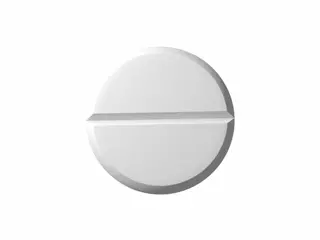| Package | Dosage | Price | Price per Dose | |
|---|---|---|---|---|
| Dosage: 25mg | ||||
| 360 pill | 25mg | £263.37 | £0.73 | |
| 180 pill | 25mg | £140.54 | £0.78 | |
| 120 pill | 25mg | £101.56 | £0.85 | |
| 90 pill | 25mg | £90.93 | £1.02 | |
| 60 pill | 25mg | £73.22 | £1.22 | |
| 30 pill | 25mg | £44.87 | £1.50 | |
| 10 pill | 25mg | £18.89 | £1.89 | |
| Dosage: 50mg | ||||
| 360 pill | 50mg | £412.19 | £1.15 | |
| 180 pill | 50mg | £212.58 | £1.18 | |
| 120 pill | 50mg | £155.89 | £1.30 | |
| 90 pill | 50mg | £128.73 | £1.43 | |
| 60 pill | 50mg | £102.74 | £1.71 | |
| 30 pill | 50mg | £56.68 | £1.89 | |
| 10 pill | 50mg | £21.25 | £2.13 | |
| Dosage: 100mg | ||||
| 180 pill | 100mg | £255.10 | £1.42 | |
| 120 pill | 100mg | £192.50 | £1.61 | |
| 90 pill | 100mg | £164.16 | £1.82 | |
| 60 pill | 100mg | £116.92 | £1.95 | |
| 30 pill | 100mg | £63.77 | £2.13 | |
| 10 pill | 100mg | £23.61 | £2.36 | |

Clomiphene Description
Introduction to Clomiphene
Clomiphene is a popular medication used primarily to treat fertility issues in women. It is an oral medication that belongs to the class of selective estrogen receptor modulators (SERMs). Its main function is to stimulate ovulation by increasing the release of certain hormones that are crucial for egg development. Many women turn to Clomiphene when other treatments have not yielded successful results, making it a common choice in fertility management.
How Clomiphene Works
The medication operates by blocking estrogen receptors in the brain, particularly in the hypothalamus. When these receptors are blocked, the hypothalamus perceives a low level of estrogen, which triggers an increase in the secretion of gonadotropin-releasing hormone (GnRH). This, in turn, stimulates the pituitary gland to produce more luteinizing hormone (LH) and follicle-stimulating hormone (FSH). Elevated levels of LH and FSH promote the maturation of ovarian follicles and induce ovulation. This mechanism makes Clomiphene effective in restoring ovulation for women facing hormonal imbalances or irregular cycles.
Usage and Dosage
Clomiphene is usually prescribed in a cycle-based manner. The typical starting dose ranges from 50 to 100 mg per day, taken orally for five days, usually early in the menstrual cycle. The doctor will monitor the patient's response through ultrasounds and hormone tests. If ovulation does not occur, the dose may be increased under medical supervision. It is essential to follow the prescribed dosage and instructions carefully to minimize side effects and maximize effectiveness.
Benefits of Clomiphene
One of the main advantages of Clomiphene is its high success rate in inducing ovulation. It is an affordable, widely accessible option compared to other fertility treatments like injections or in vitro fertilization (IVF). Many women experience regular cycles and conception after a few treatment cycles. Additionally, Clomiphene can be used in both fertility treatments and in cases of certain hormonal disorders. Its oral administration is also convenient compared to injectable medications, making it a preferred choice for many patients.
Potential Side Effects
While Clomiphene is generally well-tolerated, some women may experience side effects. Common issues include hot flashes, mood swings, headaches, and bloating. Ovarian enlargement and discomfort, such as pelvic pain, can also occur. In rare cases, multiple pregnancies may happen if multiple eggs are released. Occasionally, visual disturbances like blurred vision or flashes can occur, which require immediate medical attention. It is important to discuss potential risks with a healthcare provider before starting treatment.
Precautions and Considerations
Clomiphene should only be used under medical supervision. Women with certain health conditions, such as ovarian cysts, liver disease, or abnormal uterine bleeding, should consult their doctor before using the medication. It is not suitable for women who are pregnant or suspect they might be pregnant. Additionally, overuse or misuse of Clomiphene can lead to ovarian hyperstimulation, which can be serious. Regular monitoring during treatment helps prevent complications and ensures safety.
Conclusion
Clomiphene remains one of the frontline treatments for women experiencing difficulties with ovulation. Its proven efficacy, ease of use, and accessibility make it a common choice in fertility therapy. However, like all medications, it should be used responsibly with proper medical guidance. Patients should maintain open communication with their healthcare providers to optimize outcomes while minimizing potential risks and side effects.

